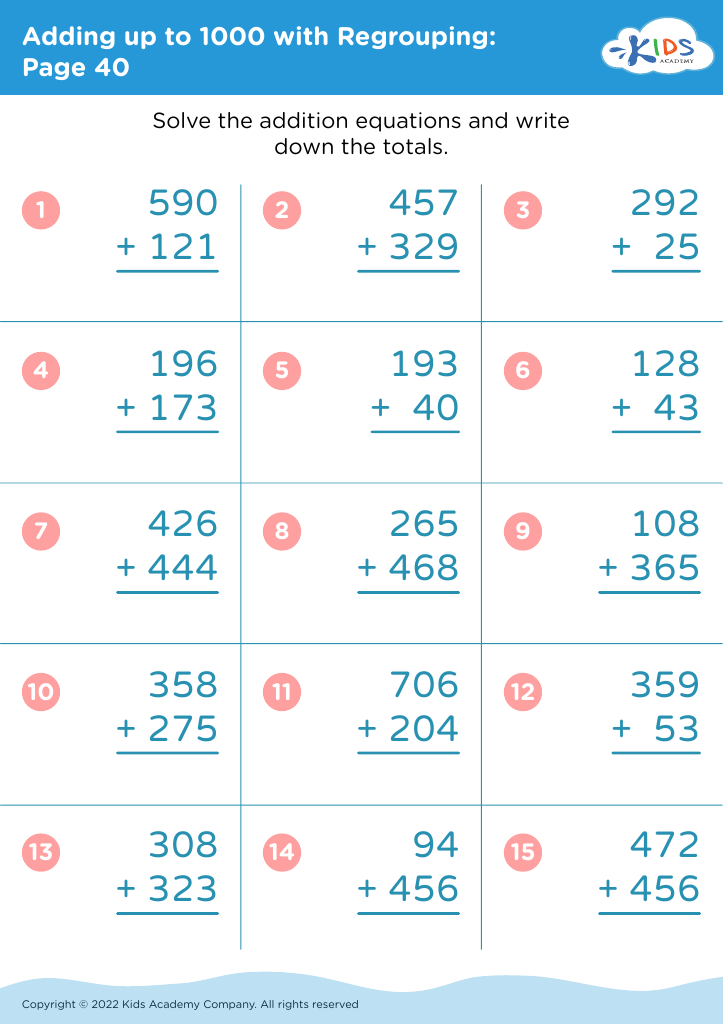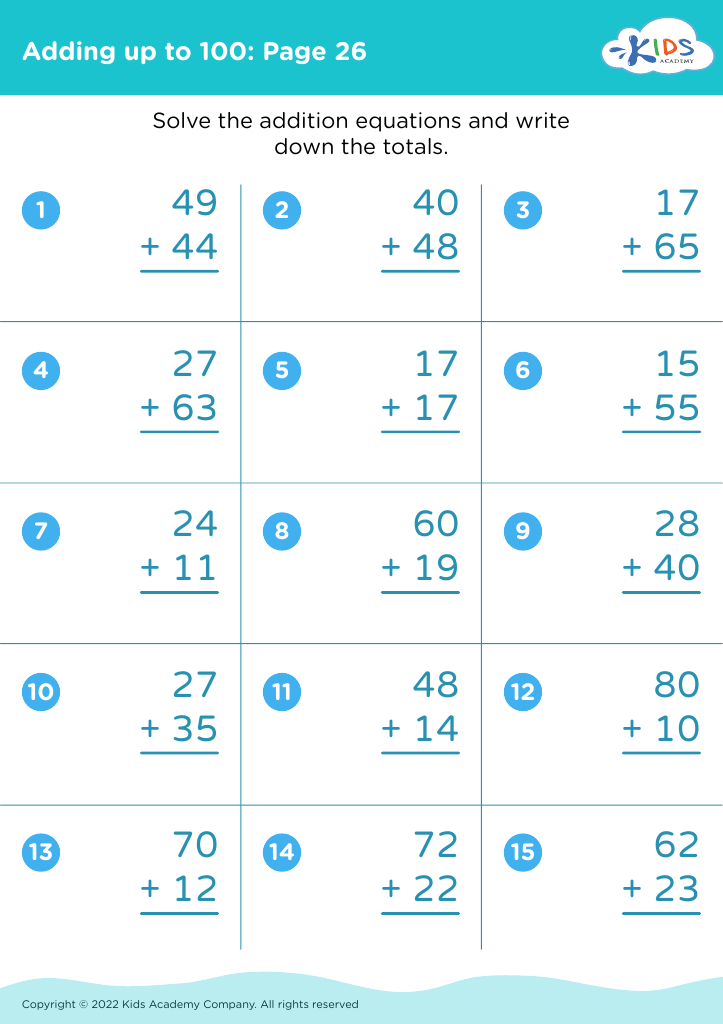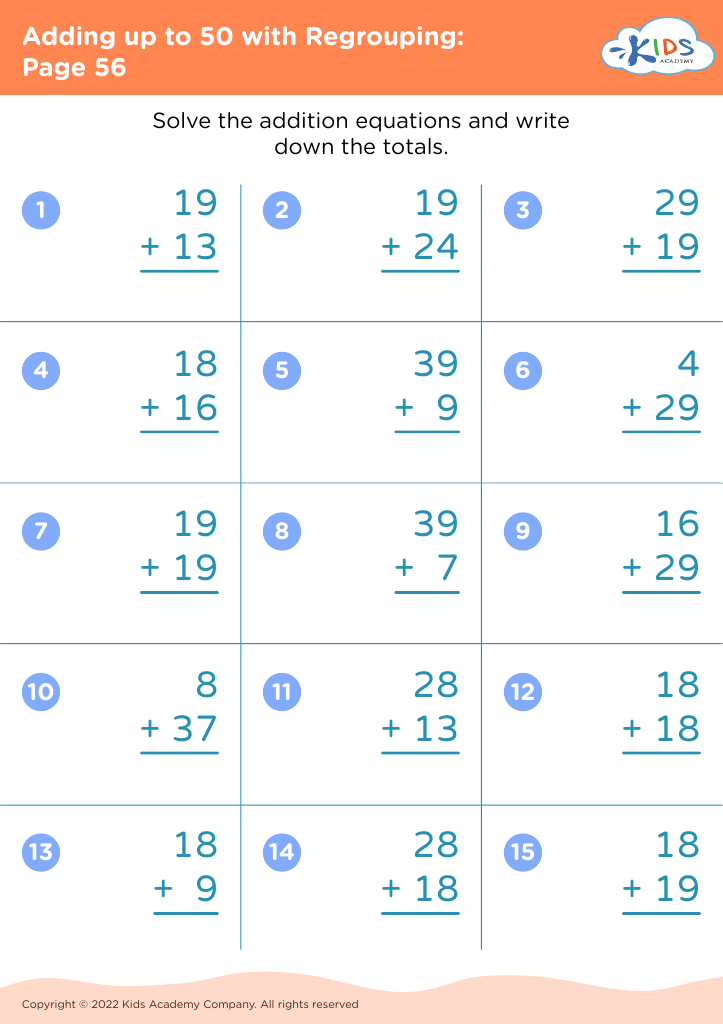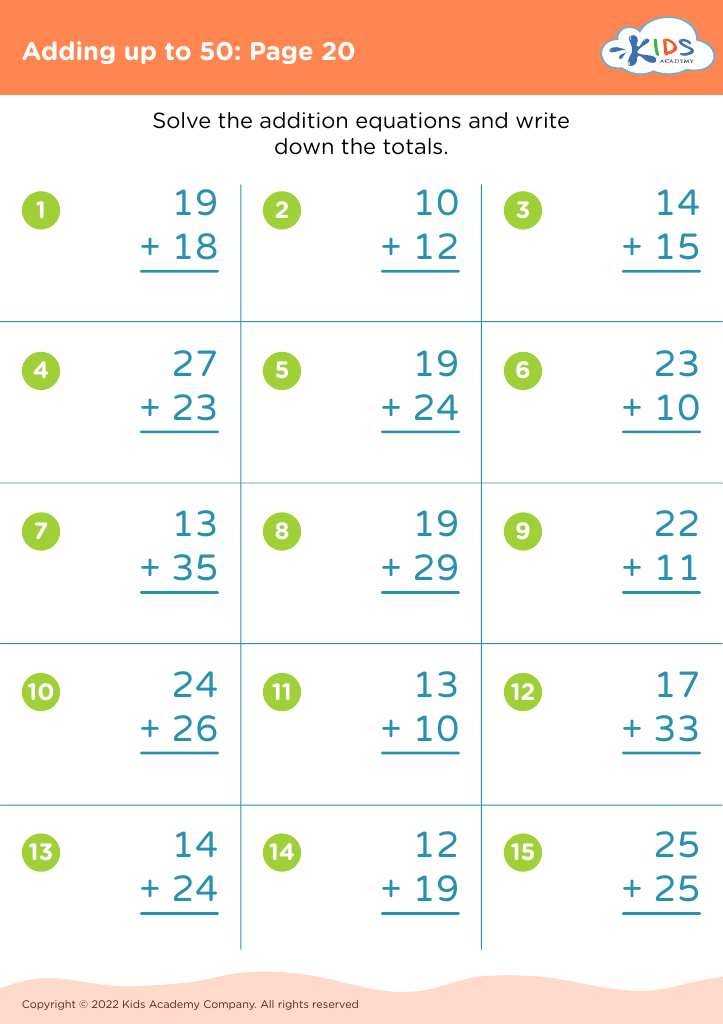Learn subtraction Math Worksheets for Ages 3-7
4 filtered results
-
From - To
Discover the joy of learning subtraction with our engaging math worksheets designed for children ages 3 to 7! Our carefully crafted resources provide a fun and interactive way for young learners to grasp essential subtraction concepts. From simple visual aids to interactive exercises, these worksheets cater to diverse learning styles, making math enjoyable and accessible. As children progress through varying levels of difficulty, they build confidence in their math skills while developing critical thinking. Perfect for both classroom and home use, our subtraction worksheets are an invaluable tool to support early math education. Start your child's math journey today!
Understanding subtraction is a crucial skill for children aged 3-7, as it lays the foundation for their future mathematical learning and cognitive development. Learning subtraction helps children develop critical thinking and problem-solving abilities. At this age, children are naturally curious and eager to explore concepts such as quantity and relationships, making it the perfect time to introduce subtraction through engaging, age-appropriate activities.
Moreover, mastering subtraction aids in building a strong numerical sense, fostering confidence in students as they navigate more complex math topics in later years. Subtraction also enhances a child's understanding of the world around them, as they encounter practical situations requiring subtraction, such as sharing resources or measuring quantities.
Involving parents in the subtraction learning process creates an opportunity for bonding and reinforces learning in a supportive environment. Teachers, too, play a pivotal role by using interactive methods, such as games and visuals, to make learning enjoyable.
Neglecting early subtraction skills may lead to challenges as children progress through school. Thus, investing time and resources in teaching subtraction from a young age benefits children academically and supports their overall development, ensuring they are prepared for more advanced concepts in the future.




















